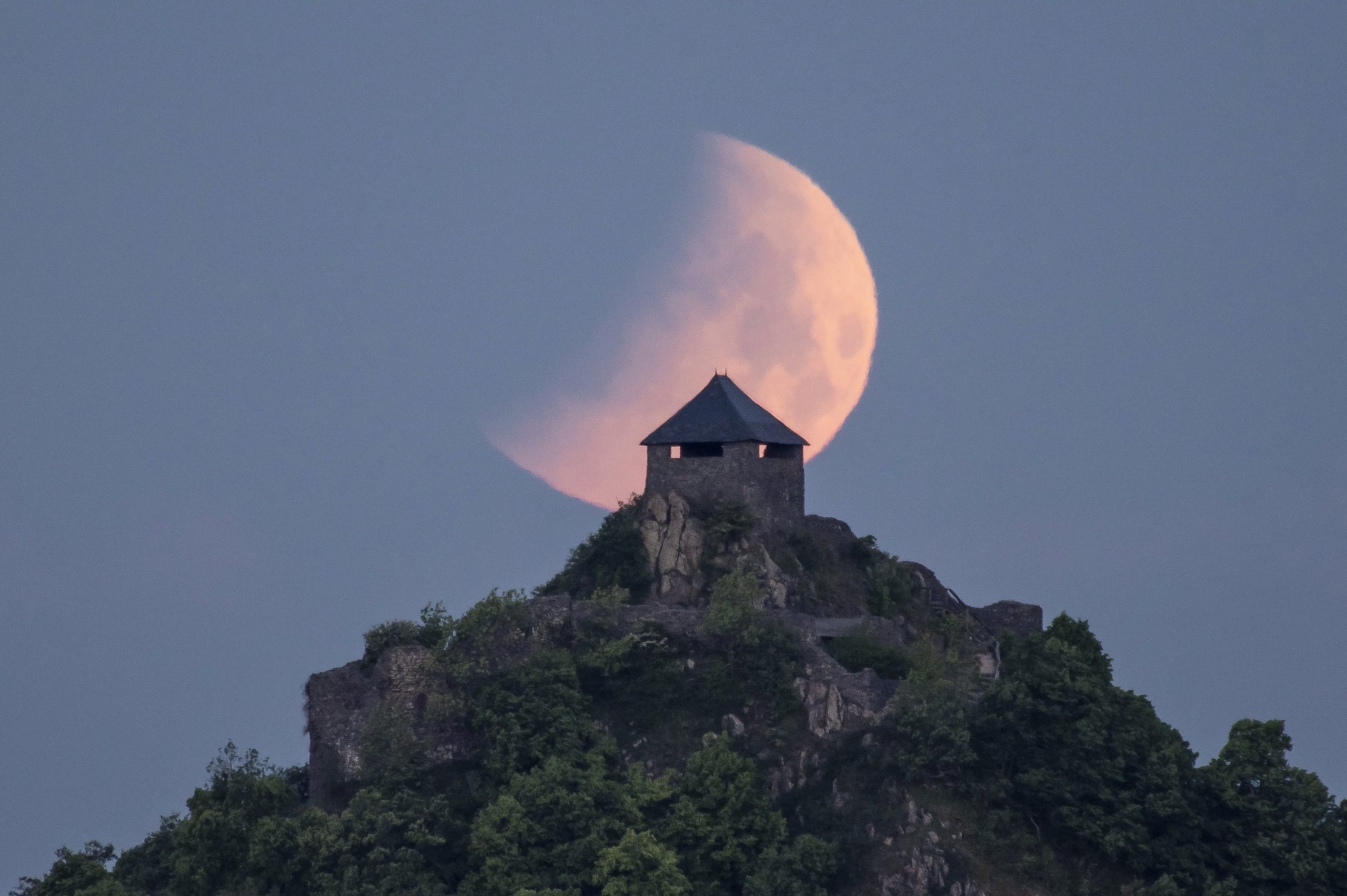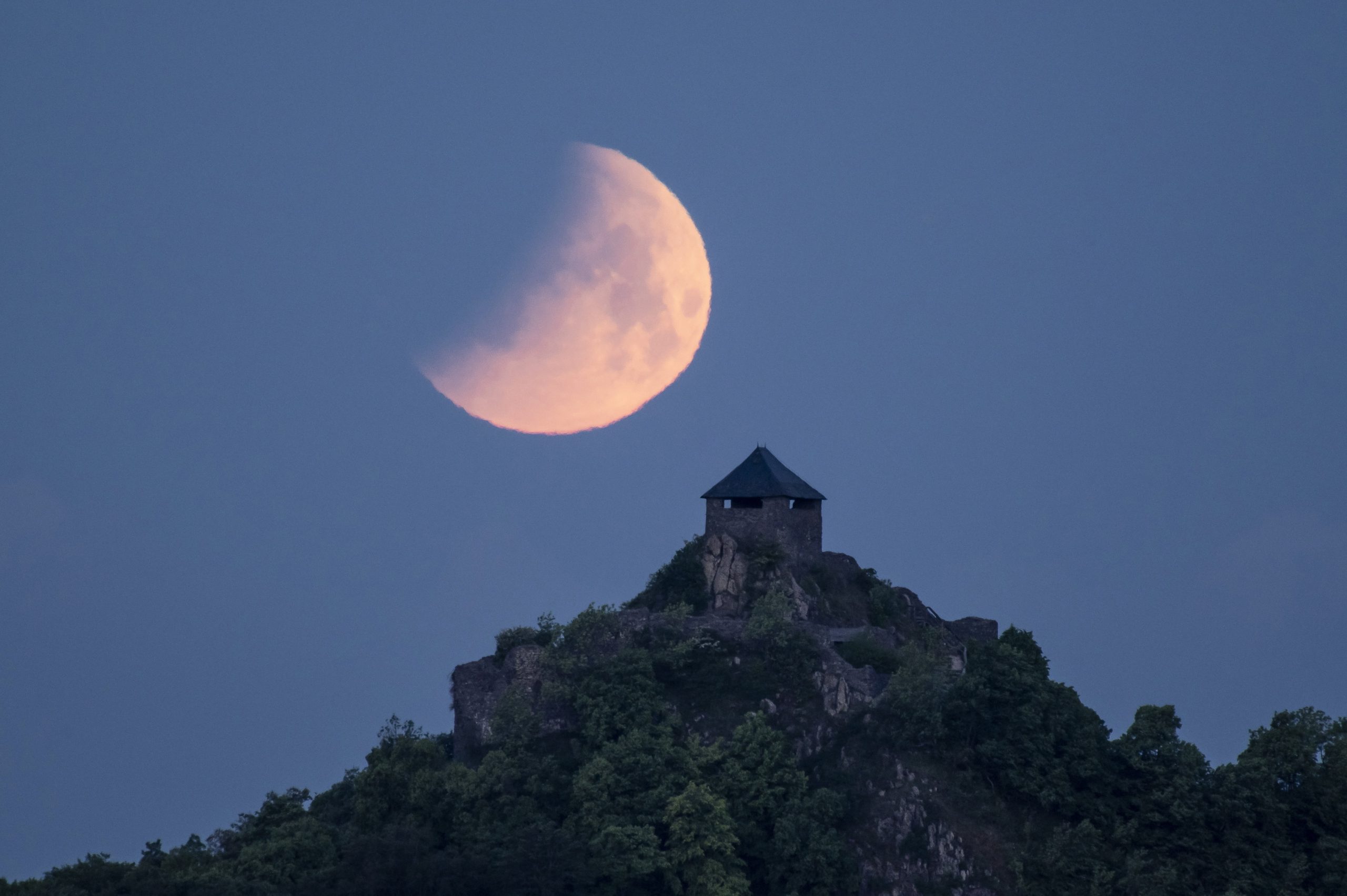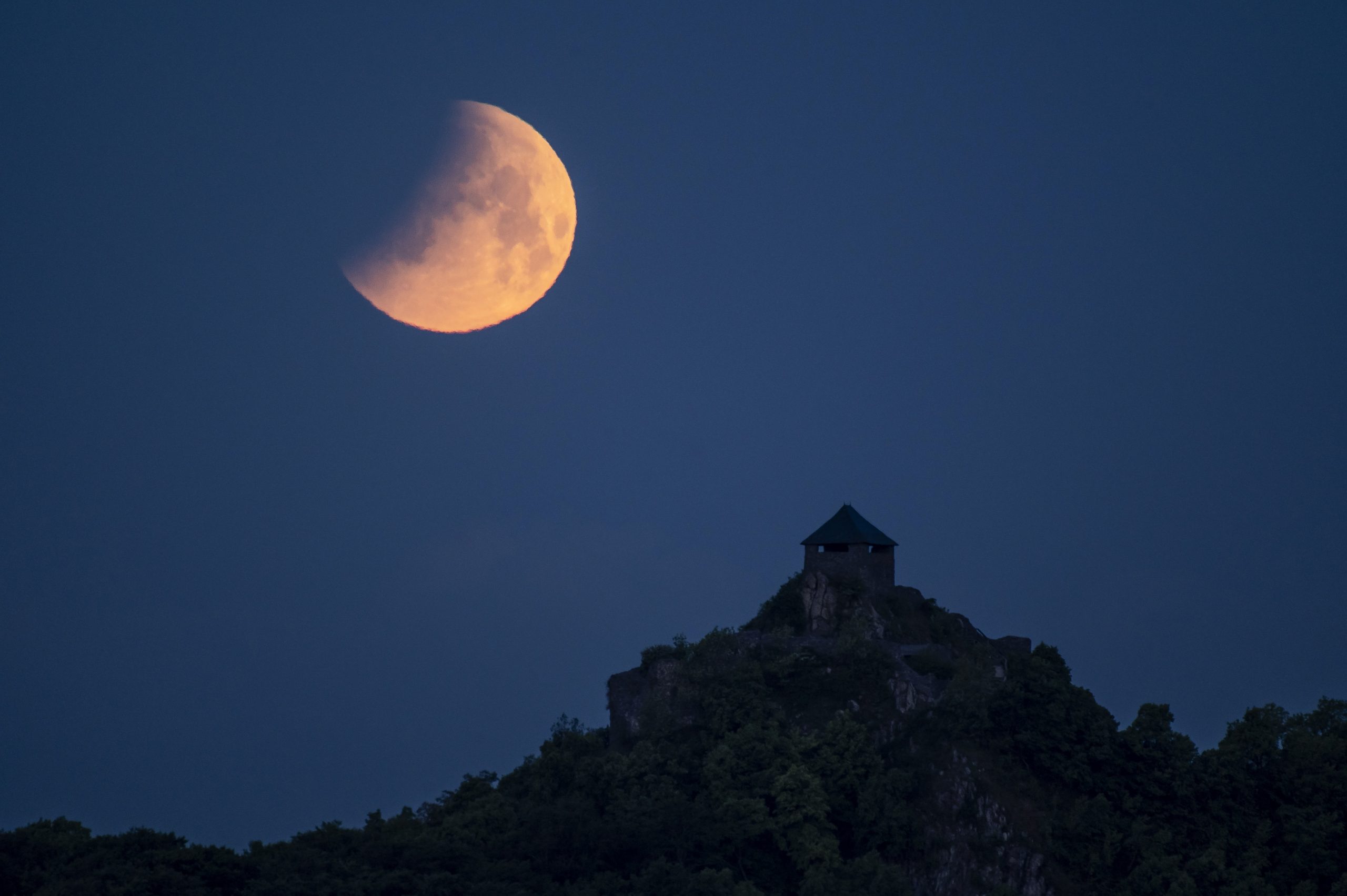
On Monday there was a total lunar eclipse at dawn, visible from Hungary as a partial lunar eclipse on the horizon before sunrise. The photographer of the state news agency photographed it from the Salgó Castle near Salgótarján.
This article was originally published on our sister-site, Ungarn Heute.
Those who got up very early today and looked up to the sky could observe a unique, breathtaking phenomenon: a lunar eclipse. The total eclipse was clearly visible from America, while from Hungary only the beginning of the phenomenon, the partial eclipse, could be observed.
When the Earth’s shadow passes over the Moon and eclipses it, you can see how the celestial bodies Sun, Earth, and Moon relate to each other. During a lunar eclipse, the Moon passes through the shadow cast into space by the Earth, which is illuminated by the Sun. This astronomical event can only occur if the sun, earth, and moon line up exactly. As seen from Earth, the sun and the moon are opposite each other. If the moon is full, the lunar eclipse can be seen from Earth wherever the moon is above the horizon at the time or where it is at night.
Few people know that there are, for example, more solar eclipses than lunar eclipses. Unfortunately, we can rarely observe this special celestial phenomenon, because the moon’s shadow is much smaller on Earth, so it is fully visible only in a narrow strip on the surface of our planet. No wonder the solar eclipse is more popular, because it is arguably more spectacular.

Lunar eclipse over Salgó castle, photographed from near Salgótarján at dawn on May 16, 2022. Photo by Péter Komka/MTI

A lunar eclipse is seen between the branches of a tree near Salgótarján at dawn on May 16, 2022. Photo by Péter Komka/MTI
Today we know that the light of the sun does not only consist of a homogeneous wavelength. With prisms, it can easily be broken down into the colors of the rainbow. The light that passes through the atmosphere also obeys the laws of physics and breaks down into its colors, like the glass of a prism. Longer wavelength (red) rays are less scattered in the atmosphere, which is why we see a sunset in orange-red. (Sunlight consists of blue and red light rays, among others. So the blue light rays are scattered by the earth’s atmosphere however much further than red ones).

Photo by Péter Komka/MTI
Sources: MTI, Svábhegy Observatory
Featured image: Lunar eclipse over Salgó castle, photographed from near Salgótarján at dawn on May 16, 2022. Photo by Péter Komka/MTI